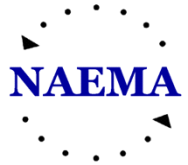The North American Energy Markets Association is posting this RFP on behalf of our member ACES and their client SMECO.

The purpose of this Request for Information (RFI) is to survey available technology and capabilities across a variety of power industry solutions that may help SMECO serve its members in the coming years. For example, this RFI seeks to provide SMECO with information as to entities with the ability to provide any of the following: New transmission build terminating in the SMECO service territory that allows for additional sources to be brought to the service territory, other than through the PEPCO Zone, to address concerns with generation resource adequacy and greater optionality for interconnecting new load to the electric system, including large load facilities; Non-traditional supply sources and generation technologies, including non-wires solutions; Distributed and/or microgrid technologies; and/or New emerging technologies or approaches that may help SMECO reliably and sustainably power the future for its customer-members with affordability of service top-of-mind.
Southern Maryland Electric Cooperative (SMECO) is a not-for-profit electric transmission and distribution cooperative incorporated in 1937 and is one of the 15 largest electric cooperatives in the United States. SMECO is a PJM member and is regulated by the Maryland Public Service Commission (MDPSC) and the Federal Energy Regulatory Commission (FERC). SMECO’s load is in the PEPCO Zone, and it has more than 178,000 member accounts in Charles County, St. Mary’s County, southern Prince George’s County, and Calvert County in Maryland. SMECO owns 71 substations, more than 10,000 miles of distribution lines, and nearly 500 miles of transmission lines. SMECO is a winter peaking system, with a peak load of 1,036 MW and annual load of more than 3,500,000 MWh. SMECO does not own any generation resources, other than a 5.5 MW solar generating facility through a wholly owned subsidiary, SMECO Solar LLC, and relies on the wholesale market for most of the supply needed to serve customer load.
As an RFI, any responses or questions can be directed directly to the persons listed in the RFI document.
